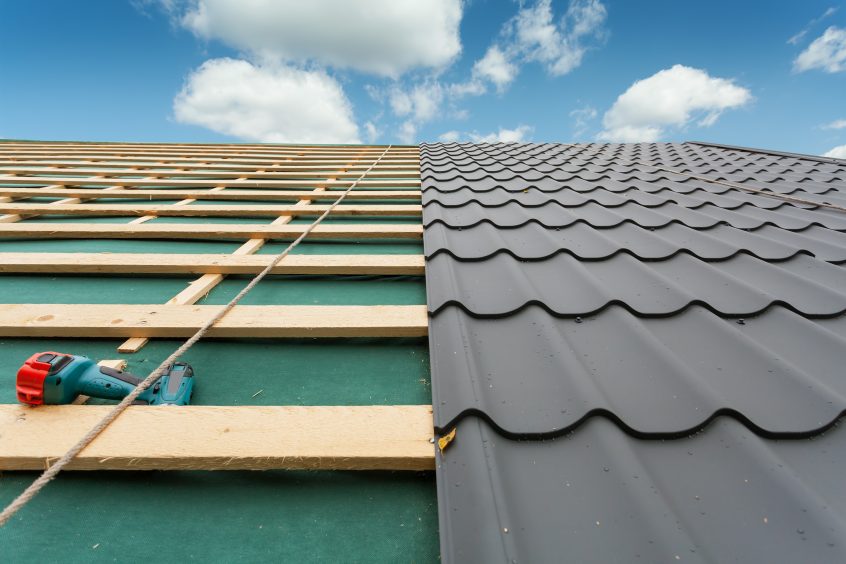Surely, the renovation of a sloped roof is much less glamorous than choosing a new living room or selecting designer balcony furniture. However, roof renovation is one of the most important decisions that you will make in the durable life of your building. It depends on your roof whether and how quickly your house may suffer water damage, and whether or not you will create good living conditions. In roof renovation, it is essential that we recognize the crucial points towards a sustainable roof, and also, the possible dangers points.
While you should, by all means, enjoy choosing your shingles, do keep an eye also on the following four key facts, as they are crucial in the making of a comfortable home.
1. Watertightness
In addition to being a building’s most exposed area, the roof carries the brunt in protecting the building from rain and leaks. Also, the roof plays an important part in extending the life of materials installed in the building.
Although a leaking roof may be the most frequent reason for thinking about roof renovation, harmful leaking symptoms in the form of damp or moldy walls are present well in advance of visible leaks.
Before attempting a properly executed roof renovation, we should carefully consider the possible reasons for leaking. Is it caused by damaged roofing, or a perforation in the vapor-permeable foil or is the condensation due to poorly built or inefficient thermal insulation? Once the cause of leaking is identified, it should be properly taken care of.
Tip: When replacing your roofing, you should remember to install sufficiently widespaced counter-laths ventilation channels. The counter-laths should be installed on a roofing underlayment – a vapor permeable foil. Make sure that it is resistant to heat and cold, and that its durable life is at least as long as the durable life of your shingles.
Another interesting highlight: the most important feature of a foil is the thickness of its functional layer – which ensures lasting efficiency – and not the thickness of the foil itself.
2. Thermal insulation of roofs
Utilizing the space under your roof can be a great way to increase your usable area – were it not for the attic’s proverbially worst living conditions. But – are they really so bad?
Only in poorly insulated roofs will you have truly unsustainable attic living conditions. By using sufficient and properly installed thermal insulation, your attic will remain unaffected by outdoor temperatures and you can maintain favorable conditions throughout the year. With almost negligible thermal gains or losses.
You can read more about the role of thermal insulation in the quality of life under the roof here.
Threats: In summer, the temperature under the roof covering rises above 80 ° C. If the building is insufficiently or poorly thermally insulated, the heat quickly transfers into your residential space, especially if the contacts of the upper vapor permeable foil and the lower vapor impermeable foil are not sealed. Also, in windy weather, which accelerates the flow of air through the roof structure, the temperature change is, similarly, almost instantaneous. This is the reason why you will have to endure increased temperatures in summer and cold in winter on a daily basis, ultimately dealing a strong blow to your pocket because of higher energy costs.
3. The sequence and type of layers in a roof system
The durable life of your roof is heavily dependent on the choice of a proper roof system and the quality of its installation. This means that you should carefully consider the correct sequence and properties of the materials used, as well as the specific details of implementation well in advance of your planned roof renovation, as they are crucial for the quality of the roof.
Surely you do not want to find out that very soon after renovation, your roof is leaking; and that despite a thick layer of thermal insulation, you are wasting a lot of energy; and that your summer living conditions are unbearable; or, that your costly investment is being gnawed by rodents which have happily settled into your expensive new home.
You might want to observe rules for the construction of passive houses as a useful guideline for your renovation. They will come into force as part of the European legislation in 2020. They stress energy efficiency of buildings, which also applies to the roof. If you take roof renovation seriously, you can achieve the comfort of a passive house even today. A properly planned and carried out roof renovation will also protect your home from other already mentioned inconveniences.
To prevent summer heat gains and winter heat losses, compulsory regulation after 2020 will prescribe that roofs must be insulated with up to 40 cm of thermally insulating material. Since insulation layers of this thickness can not be installed between roof rafters – the rafter thickness being less than a half of the required thermal insulation thickness – , thermal insulation in the implementation of permanent roofs is most effectively installed both from the outer and the innner side of rafters. Here is an example of a passive house roof:

- roofing
- ventilation channel – counter-laths above roofing underlayment, a – preferably – reflective vapor-permeable foil
- thermal insulation of walk-on carrying capacity
- Wool thermal insulation between rafters, where the rafters are covered with an air humidity regulating membrane
- ETICS thermal insulation, treated with plaster in the same way as a thin facade.
Tip: Some expert roofers may find your wish for a permanent passive roof excessive. Perhaps it seems over the top to you, as well. But in the end, it will be you who will live under your roof. Surely, you do not want to pay dearly for improper installation that will haunt you for life.

 +386 7 39 39 510
+386 7 39 39 510 advice@energyshield.biz
advice@energyshield.biz

